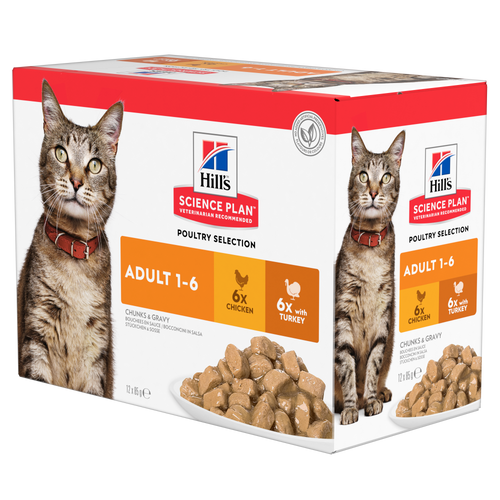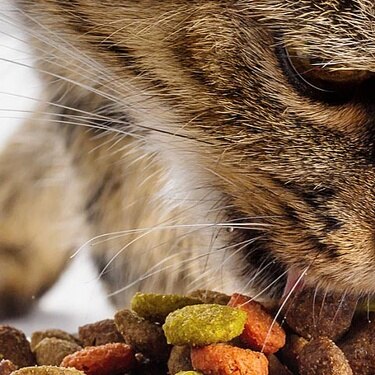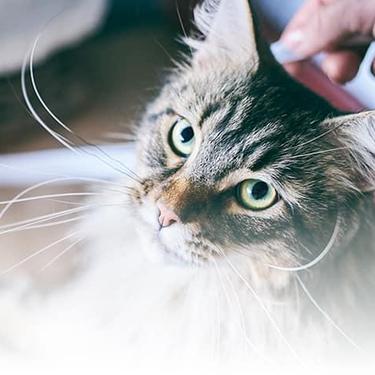
-
Find the right food for your petTake this quiz to see which food may be the best for your furry friend.Find the right food for your petTake this quiz to see which food may be the best for your furry friend.Featured products
 Puppy Food
Puppy FoodHill's Science Plan Puppy Multipack Wet Dog Food with Chicken & Beef are complete premium pet foods for growing puppies from weaning until 1 year old and for pregnant and nursing dogs. Your puppy will love these deliciously smooth and savoury minced loaves, formulated for balanced nutrition and overall health.
Shop Now Mature Adult Dog Food
Mature Adult Dog FoodHill's Science Plan Mature Adult Multipack Wet Dog Food with Chicken & Beef are complete premium pet foods for mature adult dogs from 7 years. Your dog will love these deliciously smooth and savoury minced loaves, formulated to deliver the appropriate amount of energy to support the needs of adult dogs.
Shop Now Adult Wet Dog Food with Beef
Adult Wet Dog Food with BeefHill's Science Plan Adult Multipack Wet Dog Food with Chicken, Beef & Turkey are complete premium pet foods for adult dogs from 1 year. Your dog will love these deliciously smooth and savoury minced loaves, formulated for balanced nutrition and overall health.
Shop NowFeatured products Mature Adult Wet Cat Food with Chicken
Mature Adult Wet Cat Food with Chicken
Tender chicken chunks in gravy for mature adult cats. Made with easy-to-digest ingredients, high-quality protein for lean muscle maintenance and antioxidant vitamins C+E for optimal health.
Shop Now Light Adult Multipack Wet Cat Food with Chicken & Ocean Fish
Light Adult Multipack Wet Cat Food with Chicken & Ocean FishTender chicken chunks in gravy for cats, with L-carnitine and fewer calories for ideal weight management. Packed with high-quality protein, omega-6s, and vitamin E for shiny fur and healthy skin.
Shop Now Adult Multipack Wet Cat Food with Beef, Ocean Fish & Chicken
Adult Multipack Wet Cat Food with Beef, Ocean Fish & ChickenTender chunks in gravy for cats, with high-quality protein to maintain lean muscle. With vitamin E and omega-3s & -6s for healthy skin and balanced minerals to support healthy vital organs.
Shop Now -
Dog
- Dog Tips & Articles
-
Health Category
- Weight
- Food & Environmental Sensitivities
- Urinary
- Digestive
- Joint
- Kidney
-
Life Stage
- Puppy Nutrition
- Adult Nutrition
- Senior Nutrition
Cat- Cat Tips & Articles
-
Health Category
- Weight
- Skin & Food Sensitivities
- Urinary
- Digestive
- Kidney
-
Life Stage
- Kitten Nutrition
- Adult Nutrition
Featured articles The Right Diet For Your Pet
The Right Diet For Your PetIn people, the right diet is very important. If you are eating the wrong way for your metabolism, activity level, age and lifestyle you could end up with health issues.
Read More Show some love with wet foods: a great choice for pets with health issues
Show some love with wet foods: a great choice for pets with health issuesShow some love with wet foods: a great choice for pets with health issues.
Read More The Incredible Science Behind Your Pet's Microbiome
The Incredible Science Behind Your Pet's MicrobiomeLearn what your pet's microbiome is, how it contributes to your pet's gut and overall health, and why nutrition is important in maintaining healthy microbiomes.
Read More -


Monitoring your cat’s weight throughout their life is a really useful habit to get into and can be, quite literally, a life-saver in some circumstances. Cats are notorious for not being fans of travel or trips to the vet, so if you can weigh them at home, you can keep your and your cat’s stress levels down! In this article, we’ll look at why monitoring weight is so important and how you can go about weighing your cat at home.
How to weigh your cat at home
If you get your cat as a kitten, that’s a great time to get them used to being put on the bathroom scales. Make sure you have digital scales, especially for kittens because they are so light. Very small kittens might even be best weighed on your kitchen scales to start with.
Weighing your kitten every two weeks is ideal to start. This will let you and your vet make sure that they are growing at a healthy rate. Most cats are almost at their adult size at around six months of age, from which point you can weigh them monthly. So how to go about it?
Most digital scales will give a reading after a few seconds, so if you can get your cat to sit still enough, you can simply place them on the scales and wait. You could hold a nice treat to encourage them to stay still. Most cats are trainable with food rewards, and getting them to sit on the scales is the easiest way to do things if you can manage it.
Using their cat basket is a good option if they are a bit flighty or fidgety. Making the cat basket a positive thing is another good habit to get into for any cat owner. Too often, our cats only see the basket when it’s time to go to the vet or the cattery, so the basket can have really negative associations. Leave the basket to be used as a bed for your cat in a nice, quiet place with a favourite cushion. You can also give treats in the basket to encourage your cat to go inside.


Tasty Tips
When it’s time to weigh your cat, place them in the basket, shut the door and weigh the whole lot. Make sure the basket is sitting evenly on the scales and not touching the floor. Note the weight and then let your cat out. Weigh the basket, including anything else that was also inside like the bedding, and then simply subtract the basket weight from the basket and cat weight.
Holding your cat and weighing yourself is a third option. Many cats do not like being picked up, so please only use this method if you are sure your cat won’t struggle to get away, possibly causing you or them injury. Just as with the basket technique, weigh yourself with the cat and then without, and the difference between the two weights is the cat!
Weight watching - why is it important?
Knowing your cat’s weight is important. Once you and your vet are happy that your cat is an ideal adult weight, keeping it there is great for health. With age and after neutering, your cat might need fewer calories, and it’s easier to keep weight off than lose it. Noticing an upward trend will keep you ahead of the game. Equally, weight loss can be one of the earliest signs of disease and illness, so noticing weight change in either direction is really important. If ever in any doubt, talk to your vet – that’s why we’re here!
Reviewed by Dr. Hein Meyer, DVM, PhD, Dipl-ECVIM-CA


One of our staff authors prepared this article for you
Related products


Tender chunks in gravy for cats, with high-quality protein to maintain lean muscle. With vitamin E and omega-3s & -6s for healthy skin and balanced minerals to support healthy vital organs.

Tender chicken chunks in gravy for cats, with L-carnitine and fewer calories for ideal weight management. Packed with high-quality protein, omega-6s, and vitamin E for shiny fur and healthy skin.

Tender chicken chunks in gravy for mature adult cats. Made with easy-to-digest ingredients, high-quality protein for lean muscle maintenance and antioxidant vitamins C+E for optimal health.
Related articles

Chocolate is known to be poisonous for dogs, but it can also be toxic for cats. Learn why chocolate is bad for cats & what to do if she's eaten it.

There are three common ways to feed a cat. Each way has its advantages and disadvantages.

From essential vitamins & minerals to different types of meat, learn what to look for when choosing the best cat food for your feline.

Learn how to make homemade cat treats that are healthy for your pet with this recipe from Hills Pet Nutrition.

Put your cat on a diet without them knowing
Our low calorie formula helps you control your cat's weight. It's packed with high-quality protein for building lean muscles, and made with purposeful ingredients for a flavourful, nutritious meal. Clinically proven antioxidants, Vitamin C+E, help promote a healthy immune system.
Put your cat on a diet without them knowing
Our low calorie formula helps you control your cat's weight. It's packed with high-quality protein for building lean muscles, and made with purposeful ingredients for a flavourful, nutritious meal. Clinically proven antioxidants, Vitamin C+E, help promote a healthy immune system.

